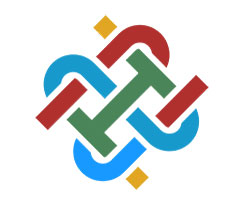
Probably each initiative thought that it would have some period of lack of competition. Instead, the competition heats up and looks as if it will become ever more intense – all round the world.
IBM and World Wire
The objective of World Wire is to establish a global network, based on blockchain, to support payments and foreign exchange in 72 countries, across 47 currencies and 44 banking endpoints. World Wire (full name IBM Blockchain World Wire) is a real-time global payments network for regulated financial institutions. It is accessible in a growing number of markets.
- Designed to accelerate foreign exchange, cross border payments and remittances, World Wire claims it:
- is the first blockchain network of its kind to integrate payment messaging, clearing and settlement on a single unified network (this is arguable – see SWIFT/R3 below)
allows participants to choose from a variety of digital assets for settlement.
World Wire provides its cross-border payments using the Stellar protocol. This makes money transfers point-to-point in lieu of the complexities of conventional correspondent banking.
By doing this it:
- reduces the involvement of intermediaries
- enables users to accelerate settlement time (often reduced to in seconds) by transmitting monetary value in the form of digital assets, commonly known as cryptocurrencies or ‘stable coins’.
This approach:
- improves operational efficiency and liquidity management
- streamlines payment reconciliation
- reduces overall transaction costs for financial institutions.
The network already supports settlement using Stellar Lumens and a US$ stable coin via IBM’s collaboration with Stronghold. Pending regulatory approvals and other reviews, six international banks – including Banco Bradesco, Bank Busan, and Rizal Commercial Banking Corporation – have signed letters of intent to issue their own stable coins on World Wire. This will add Euro, Indonesian Rupiah, Philippine Peso, Korean Won and Brazilian Real stable coins to the network.
“We’ve created a new type of payment network designed to accelerate remittances and transform cross-border payments to facilitate the movement of money in countries that need it most,” said Marie Wieck, General Manager, IBM Blockchain.
“By creating a network where financial institutions support multiple digital assets, we expect to spur innovation and improve financial inclusion worldwide.”
Stable coins
According to Wikipedia, for those not familiar with stable coins, currency backed stable coins are the most common (and were the first) type of stable coins on the market. Their prime characteristics include:
- “the value pegs to one or more currencies (most commonly the US$, but also the Euro and Swiss franc) in a fixed ratio
- “the tether is realized off-chain, through banks or other types of regulated financial institutions which serve as depositaries of the currency used to back the stable coin
- “the amount of the currency used for backing of the stable coin has to reflect the circulating supply of the stable coin
- “the value of stable coins of this type is based on the value of the backing currency, which is held by a third-party regulated financial entity.
“In this setting, trust in the custodian of the backing asset is crucial for the stability of price of the stable coin. Fiat-backed stable coins can be traded on exchanges and are redeemable from the issuer. The cost of maintaining the stability of the stable coin is equivalent to the cost of maintaining the backing reserve and the cost of legal compliance, maintaining licenses, auditors and the business infrastructure required by the regulator.”
SWIFT/R3
In January (2019) SWIFT added a proof of concept to trial a new gateway – the ‘gpi Link’ – with R3’s Corda. The objective is to try out interlinking of trade and e-commerce platforms with gpi. It is SWIFT’s new standard for cross-border payments and is an extension of other SWIFT trials with blockchain technology.
This PoC wishes to address the e-commerce and trade ecosystems. These need global, fast, secure and transparent settlement, preferably using fiat currencies. ‘gpi Link’ enables ‘off-ledger’ payment settlement. In essence, ‘gpi Link’ should connect multiple trade platforms to gpi members.
As SWIFT describes it, this will offer “trade transactions powered by gpi” and will include:
- gpi payment initiation
- end-to-end payment tracking
- payer authentication
- credit confirmation.
The gateway between gpi and R3 will allow:
- continuous monitoring and control of payment flows
- the subsequent movement of goods by those trade platforms.
In the SWIFT/R3 PoC, corporates using the R3 platform will be able to:
- authorise payments from their banks via gpi Link
- settle gpi payments through their bank
- receive credit confirmations on the respective trade platforms via gpi Link on completion.
By enabling trade platform ecosystems using Corda to integrate ‘gpi Link’ into their trade environments, SWIFT hopes to extend its reach beyond member banks to include to a wider range of corporates and markets. Furthermore, SWIFT says it will not limit ‘gpi Link’ to R3’s DLT-based trade environment. SWIFT has plans to support, if the Corda PoC is successful, for other DLT, non-DLT and e-commerce trade platforms.
As Luc Meurant, SWIFT’s Chief Marketing Officer, put it: “With the gpi Link, banks will be able to provide rapid, transparent settlement services to e-commerce and trading platforms, opening up whole new ecosystems to the speed, security, ubiquity and transparency of gpi and enabling them to grow and prosper in the new digital economy.
“Given the adoption of the Corda platform by trade ecosystems, it was a natural choice to run this proof of concept with R3.”
FIS/WorldPay
FIS, a provider of financial services technology is buying Worldpay, a leader in eCommerce and payments, for approximately $43B, including the assumption of Worldpay debt. When the deal closes, the combined company aims to offer global:
- enterprise banking
- payments
- capital markets
- eCommerce capabilities.
In effect, through combining, the pairing will:
- enhance FIS’ acquiring and payment offerings
- increase Worldpay’s distribution footprint, accelerating its entry into new geographies.
“Scale matters in our rapidly changing industry,” stated Gary Norcross, Chairman, President and Chief Executive Officer, FIS. “Upon closing later this year, our two powerhouse organizations will combine forces to offer a customer-driven combination of scale, global presence and the industry’s broadest range of global financial solutions. As a combined organization, we will bring the most modern solutions targeted at the highest growth markets.
“The long-term value we will create for clients and for shareholders will set the bar in our industry and will create a range of new career opportunities for our employees. I have never been more excited about the future of FIS.”
Synonym Advisory
When SWIFT and R3 announced the ‘gpi Link’ PoC early in 2019, we puzzled over the significance. In many ways we still do – as a long term concept. Why? The underlying ‘feel’ remains that somewhere someone is disintermediating somebody else.
The same applies to the IBM/World Wire offering. Is it trying to undermine SWIFT and traditional correspondent banking – which would be curious given that big (and small) banks are among IBM’s best customers. And again, in the FIS/WorldPay tie up, the same underlying notions apply – of bulking up, of offering global payment and settlement services, including for eCommerce.
The difficulty Synonym Advisory has, on behalf of its clients, is deciding who the ‘somebodies’ are. Who is disintermediating whom? IBM, SWIFT, correspondent banking or ????
There is one possible positive, for enterprise customers. International payments and use of the correspondent banking has long been cumbersome and expensive. With such formidable competitors, costs should fall – if they truly compete.
Synonym Advisory’s objective is to provide its clients – whether enterprises or vendors – with common-sense research, markets advice and input about today’s and tomorrow’s information technology/communications.
We satisfy our objective when our clients achieve their objectives.
The focus for our advisory services includes:
- ERP
- Supply Chain
- HR
- Security
- Blockchain/Digital Ledger
We are also developing new research into next generation Edge Computing, especially as it may apply across IT.


























